These days, the name Thetford is usually at the top of the list when you think of leisure vehicle appliances, and that’s no surprise when you consider that 99% of toilets fitted to mainstream UK leisure vehicles are by Thetford, as are 96% of cookers and 58% of fridge/freezers.
Take Swift’s 2026 Kon-Tiki range, which includes a Thetford thermostatic oven and grill, or Bailey’s new Endurance campervan range, which has a Thetford fridge and toilet.
Thetford toilets and fridges are manufactured in the Netherlands, but sinks, hobs, ovens and full cookers are produced here in the UK, at the company’s factory near Rotherham, South Yorkshire.
That’s not all the brand produces, either, with ‘van owners likely to encounter Thetford when looking for maintenance products such as the best motorhome toilet chemical.
I recently visited to learn more about the history of the company, and to see various products being manufactured.
Beginning with spinning
Back in the 1960s, a Sheffield ophthalmologist, Dr John Wilkie, acquired a Spinflo machine to ‘play’ with as a hobby. As the name implies, the Spinflo machine basically spins sheet metal at high speed, while tooling forms the shapes.
Dr Wilkie found that by using this method, consistent accuracy could be achieved, especially in forming bowls, which he later began to supply to the caravan industry. Then in 1975, Spinflo Limited was founded.
Within a short time, Spinflo Limited went on to manufacture a two-burner hob and grill. Over the next couple of decades, there were many developments – combination hob/sink/drainer units, four-burner hobs and eventually full cooker units, among others, which Spinflo produced initially for the leisure vehicle market and later for the marine sector. In 1996/1997, the firm exported its first products to Australia.
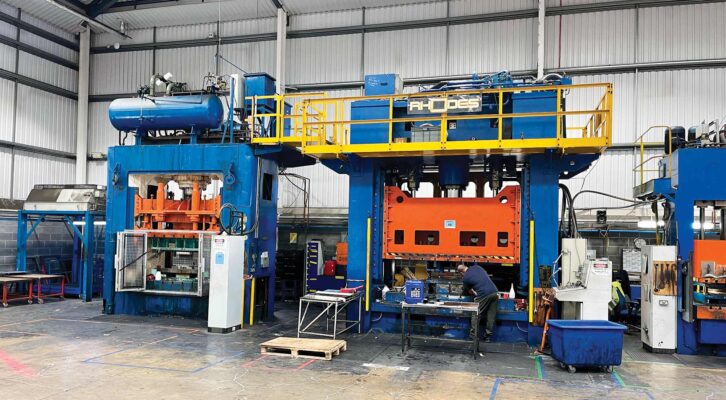
At the turn of the millennium, Spinflo opened its powder coating plant, with the enamel plant following shortly afterwards in 2003. Spinflo was a great success story, so much so that it caught the eye of Thetford BV in the Netherlands, which acquired Spinflo Limited in 2005.
Under the guidance of Thetford, the company went from strength to strength (as it continues to do) and in 2012, it moved to its current (and larger) premises. Although the company is now known as Thetford, it still produces Spinflo bowls – and still uses an original Spinflo machine to manufacture them.
In 2021, US investor Monomoy Capital Partners bought the company. Thetford BV, which is based in Etten-Leur, near Rotterdam, in the Netherlands, remains the worldwide HQ and main distribution centre, employing some 537 staff.
There are 171 employees at Thetford in the UK, and the UK factory supplies directly to leisure vehicle manufacturers if it’s more cost-effective for them to do so, rather than shipping items to the Netherlands and then back to customers in the UK. Thetford is now a global company, with manufacturing bases all around the world.
Production at the UK factory
So what goes on at the UK premises? Let’s start with the original Spinflo machine. Essentially, a flat piece of stainless steel is inserted and in a process closely controlled by the operative, spun at speed and formed into a bowl shape within the square of stainless steel.
It’s a very simple concept, but a highly skilled procedure. The resulting bowl is then trimmed from the sheet as required.
Of course, other items manufactured here involve far more complicated production, but in the main, they all begin life as blank sheets of metal. Cooker hobs and hob units, for example, are pressed and punched into shape by presses that can exert pressures of 300-800 tonnes.
Many of the items are enamel coated, but before this is carried out, the various basic pressed or shaped parts go through what is, in effect, a huge dishwasher, which gets rid of any particles or grease that might affect the final finish.
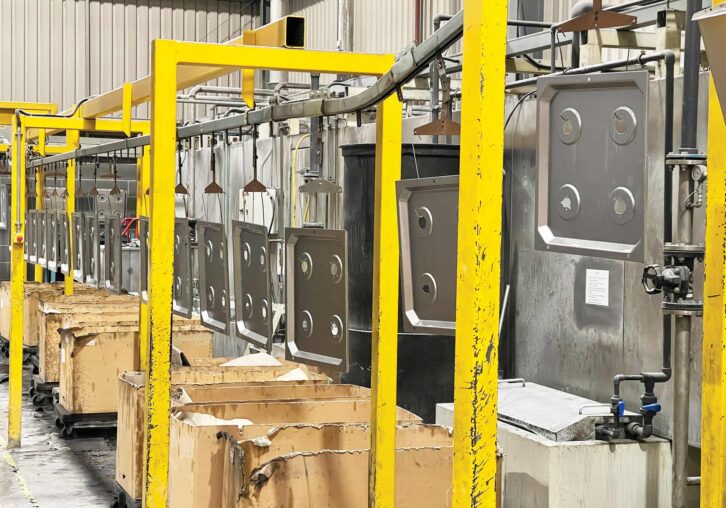
Once clean, each component is spray coated with what initially looks like a light, dull grey powder, perhaps not the sort of colour or finish you would really want in your kitchen.
However, the parts are then hung on a conveyor system that takes them through a massive oven, capable of heating to 800°C. What goes in a dull grey comes out finished in a smart, glossy black.
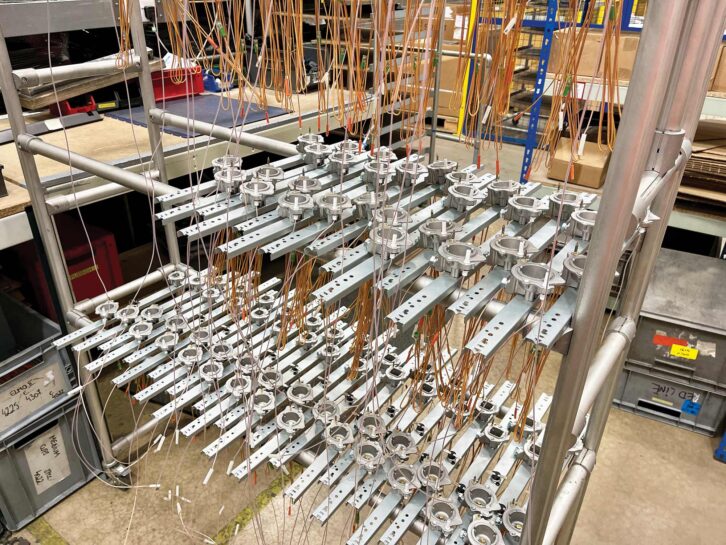
Next comes the assembly of the various units, which is anything from a hob to a full cooker (or sink, or cooker/sink combination, of course). Gas burners and/or electric hotplates are attached to the enamel base units before pre-shaped gas pipes and electrics are attached. At each stage of production, tests are carried out on the units. That way, any issues can be resolved there and then, rather than potentially causing bigger problems at the end of the factory line.
These tests include using heat guns to check the correct operation of thermocouplings and so on, as well as pressure testing gas fittings.
Knowledgeable staff
It’s often the case that companies in the leisure vehicle sector operate fascinating manufacturing procedures – and Thetford is no exception. It’s so interesting to see raw materials enter the factory and end up as completed items.
What is also reassuring to know is that many of Thetford’s employees, in the Netherlands and here in the UK, are keen motorhomers and caravanners, so sometimes, small problems can be resolved as a result of their own personal experience of using these products.
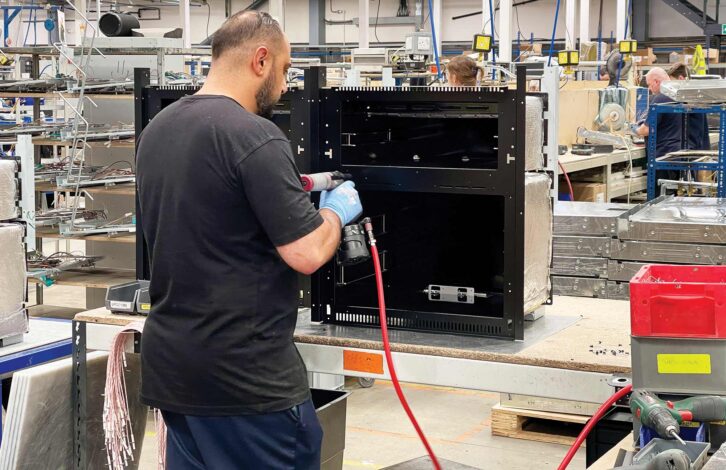
For example, Thetford manufactures toilet cassette doors, and it was found they wouldn’t stay open on certain panel van conversions.
A simple solution to this potentially annoying problem was to attach a small magnet to the door, which in turn attaches itself to the van’s body.
Facts and figures
About 1500 cookers and ovens are produced every day at Thetford, as well as 600 hobs and 500 sinks – quite an output. When I visited, I saw the work being done in a relaxed but efficient manner, with close attention paid to getting it right first time.
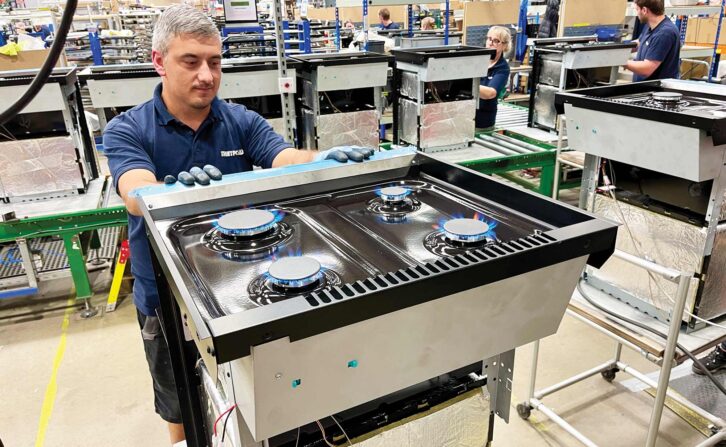
As users of a Thetford cooker, we have been satisfied with its performance. But I’m looking at these touring essentials in a completely different way, now that I’ve witnessed them being manufactured.
Find out more: thetford.com/en
If you have a cassette toilet in your ‘van, one thing you will want to ensure you know how to do is correctly empty it. If you’re in need of some guidance, don’t miss our tips on how to empty a motorhome cassette toilet.
If you’ve enjoyed reading this article, why not get the latest news, reviews and features delivered direct to your door or inbox every month. Take advantage of our brilliant Practical Motorhome magazine SUBSCRIBERS’ OFFER and SIGN UP TO OUR NEWSLETTER for regular weekly updates on all things motorhome related.
Leave a Reply